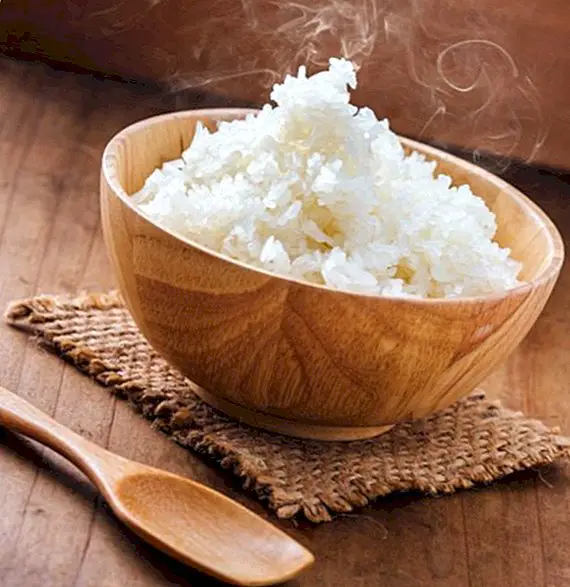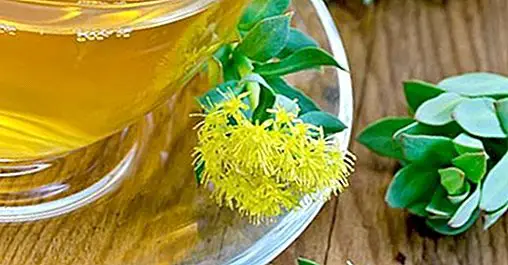Tahini: what is it, recipe and benefits of tahina
Oriental cuisine, especially Indian cuisine or Turkish cuisine, stands out for bequeathing us a whole set of wonderful recipes and typical dishes where some legumes, nuts and spices are the main ingredients. Therefore it becomes a deliciously aromatic cuisine, where the slightly spicy flavors are tremendously characteristic.
One of those dishes or typical recipes is the tahini, also known by the names of tahine, tahina Or simply tahini, a pasta or traditional sauce from the Middle East cuisine and which in fact stands out mainly for being a very old food.

It is made by grinding the sesame seeds, also known as sesame, which are emulsified with oil and water until a creamy paste with a pronounced flavor is obtained. In turn, they can be elaborated simply with water because the seeds are oleaginous.
That is, it basically consists of a paste made from sesame seeds, which are ground and emulsified with different ingredients, especially olive oil and / or water. This paste is usually added crushed garlic cloves, freshly squeezed lemon juice and finely chopped parsley, although these last three ingredients are optional.
Depending on the place in the world where we are, it can become a condiment (it is a fundamental ingredient in the preparation of hummus and eggplant puree), or eat directly with bread (especially with pita bread). In Turkey, for example, it is also used in the elaboration of a nutritious winter breakfast where the tahini is mixed with a sweet syrup typical of the cuisines of the eastern Mediterranean and known by the name of pekmez.
How to make tahini or tahina at home
As you will see the preparation of this traditional oriental food is actually as easy as it is simple. We explain below the ingredients you need and the steps to follow for their preparation at home.

Ingredients:
- 3 tablespoons of sesame seeds (sesame seeds)
- 4 tablespoons of olive oil or water
- a pinch of salt
Preparation of tahini or tahini:
If the sesame is not toasted, we should toast it ourselves. To do this first rinse the sesame seeds well under the cold water stream, then drain. Now put the seeds in a large pan and place them over medium heat for a few minutes, until you notice that the seeds have browned a bit.
You can also toast the seeds in the oven. To do this place them on a baking tray and heat for 8 minutes at 180ºC. Once toasted they let cool a little.
Now place the sesame seeds in a chopper or an electric grinder. Add the olive oil or water and chop everything very well. Repeat the process until you get a smooth pasta.
Ready! Serve if you want it in a small bowl and enjoy !.
The benefits of tahini or tahini
If we consider that tahini or tahini is made from the cooking and subsequent crushing of sesame seeds, there is no doubt that we are faced with an extremely nutritious food, at the same time healthy.
Very nutritious food
From a nutritional point of view, its high content of group B vitamins, especially vitamin B6 and vitamin B12. As you surely know these vitamins are essential for our nervous system, as well as for the cellular regeneration of tissues.
It also provides interesting amounts of zinc, a mineral essential for the reproductive health of man. Among the minerals and trace elements that it brings, we can also mention phosphorus, magnesium, iron and calcium.
Of course, it is a very energetic food: 100 grams contribute around 595 kcal.

Help reduce cholesterol
Tahini is a food extremely rich in unsaturated fats. In fact, it contains around 50% of this type of fats, which help reduce high cholesterol levels, especially from LDL or bad cholesterol. Among these unsaturated fats we find lecithin, in fact contributing more lecithin than soy.
On the other hand favors the proper digestion of fats, very useful to prevent arteriosclerosis.
Good for the heart
Tahin is not only beneficial for reducing cholesterol but it is very good for our cardiovascular system, and especially for our heart, thanks to its contribution in unsaturated fats and to provide essential fatty acids such as oleic acid (monounsaturated fat) and linoleic acid (polyunsaturated fat).
Useful to reduce constipation
Tahina also provides interesting amounts of fiber, so it becomes a wonderful food not only useful to improve the digestion of fats, but to prevent constipation (or treat it naturally) and regulate intestinal transit. This article is published for informational purposes only. You can not and should not replace the consultation with a Nutritionist. We advise you to consult your trusted Nutritionist. ThemesSeeds



